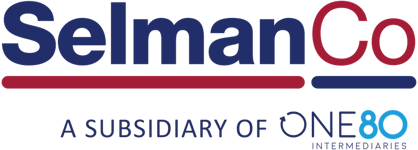If you want to reach people, you need to go where they are. More and more, this means using digital media. People spend a jaw-dropping amount of time on digital media each day. As a result, smart companies are turning to digital strategies as an important way of promoting employee benefits.
America’s Obsession with Digital Media
How much time do you spend consuming digital media?
If you’re like the average American adult, it’s almost six hours each day. According to eMarkerter, the average U.S. adult spends a whopping 5 hours and 50 minutes engaging with digital media every day, including computers, mobile devices and other connected devices. This figure does not include television, radio or print media. Once those non-digital forms are included, the amount of time an American spends on media each day jumps to 12 hours and 7 minutes.
These numbers aren’t hard to believe when you realize that most people are never far away from a screen. Many people use computers, laptops or tablets at work and home. On top of that, many people are never far away from their smartphone.
According to Pew Research Center, 77 percent of U.S. adults use a smartphone. Among college graduates, this figure jumps to 91 percent. Age also makes a big difference. Among people ages 18 to 29, 94 percent use a smartphone, and among people ages 30 to 49, 89 percent do.
The Pew Research Center also found that 69 percent of U.S. adults use social media. Again, this number is higher among younger adults; 88 percent of people ages 18 to 29 use social media, as do 78 percent of people ages 30 to 49 do.
People spend a good chunk of their daily life staring at a screen and checking social media – and this is creating great opportunities for employee benefits.
Digital Media in the Benefit Industry
The rise of digital media has changed the way people interact with information. These days, people expect instant access to materials, anywhere and anytime. For HR professionals struggling to communicate important information about voluntary benefits , the rise of digital media should not be ignored.
Employers are responding by investing in benefits technology. According to Employee Benefit News and SourceMedia Research, many employers plan to increase their spending in various benefits technology areas. Approximately 25 percent plan to invest more in benefits communication technology, and around 35 percent plan to invest more in an employee benefits portal. Extra money is also being spent on enrollment, analytics and administration.
Going Beyond Email
According to the Radicati Group’s Email Statistics Report, 2015-2019, the average business user can expect to receive around 94 emails per day in 2018. This is an overwhelming number, and it will lead many employees to ignore any emails that are not urgent. Unfortunately, this could include emails about benefits.
For this reason, good digital strategies go beyond sending emails to employees. Although email may be an effective way to reach some people, individual online habits vary, and so should the digital strategies HR professionals use.
One strategy involves using social media. Here at Selman & Company, we have had success using Facebook. One Facebook ad campaign targeted to eligible employees to promote a specific voluntary benefit generated over 200 responses. The campaign cost about $1,000 to deploy. This is just one example of how the prevalence of social media makes it a good way to reach people interested in benefits.
Other companies are using benefits communication software to create an interactive experience. New Belgium Brewing Company, for example, used a software program called ALEX to communicate benefits to remote workers. This system is an online decision support tool that creates personalized advice about how employees can select and use their benefits. An article from Employee Benefit News describes how Fujifilms used gaming strategies to engage employees and help educate them about their benefits.
Digital media, such as social media, "smart" applications, and gamification can work together to create incentives for employees to learn about benefits. In a world where attention is one of the most valuable commodities, benefits managers are learning how digital media strategies can help them pay to play. If you're an HR professional who wants to learn more, contact us to discuss your options.




